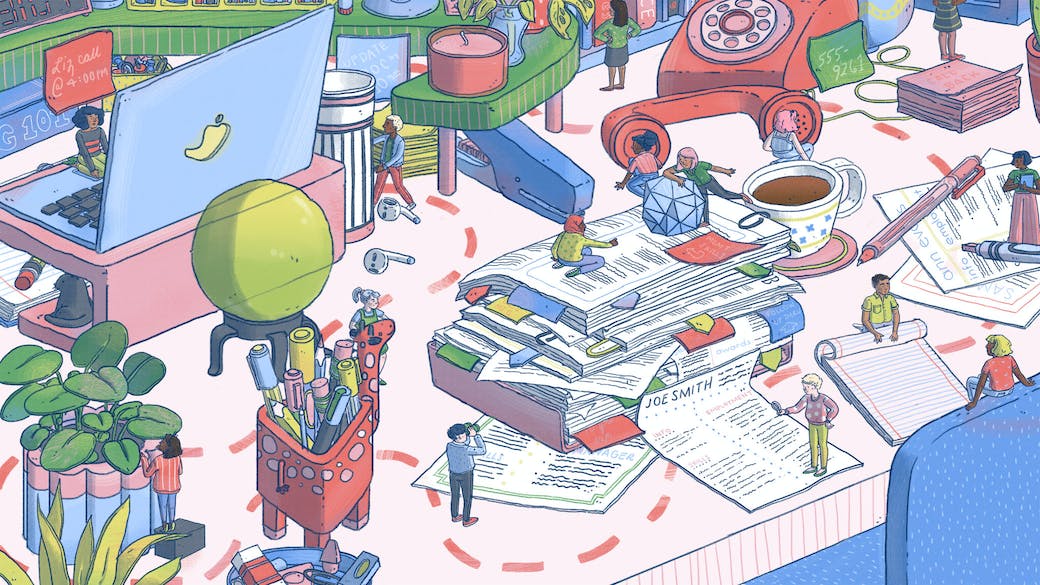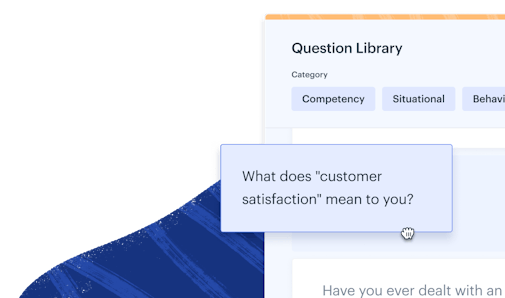How to Hire for Customer Service: A Step-by-Step Guide


How many of your customers will ever talk to your CEO, your product designers, or your engineers? It’s likely to be a pretty small number. For many customers, working with your customer service team will be the only time they are ever talking directly to your company.
Those interactions can turn a bad experience into a positive one (or vice versa). They can also draw out crucial customer insights, forming a bridge between your customers and the rest of your company.
Having the right people in those customer-facing roles — and setting them up to succeed — is critical for the long-term strength of your brand and organization.
So who are the best people for those roles, and how can you find, select, and onboard them? In this article we will answer those questions and help you build a strong, effective customer service team.
Prefer to watch a video instead? Check out this webinar on how to hire the best customer support team, featuring Help Scout's Mathew Patterson, Basecamp's Chase Clemons, and Sarah Judd Welch of Loyal.
When to hire for customer service
When is the right time to bring on a new customer service team member? Short of using the services of some sort of business-focused fortune teller, there is no perfect solution, but there are some key indicators to look for:
When your team is reporting stress: An overwhelmed customer service team will not perform at their best. When your team is struggling to keep up, it’s time to consider adding new members.
When your metrics are sliding: Keep a close eye on your key measurements like incoming support volume, time to first response, time to resolution, and customer satisfaction. If you see those numbers shifting away from their usual levels, you might need to add more staff to maintain your service quality.
When your forecasting model predicts a breaking point: For teams larger than a few people, or small teams with a rapidly growing customer base, a forecasting model can help predict when you need to start the hiring process.
A simple spreadsheet model might look at support questions per active customer, conversations handled per agent per day, and cost per agent hour. By filling in the expected company growth rate, it is easy to see when you will likely need more help.
Customer Support Hiring Calculator
See how changes in your customer growth, ticket volume, and self-service uptake affects your customer support hiring needs.
Start Calculating
5 alternatives to hiring more support staff
Hiring is slow and expensive, both in the additional salary and the time spent training a new hire. Before opening up a new role, here are some options to try:
Change your coverage patterns. Look closely at your per hour and per day incoming support reporting. Sometimes you have enough staff, but their working hours don’t match the incoming volumes. You might need to move someone to cover weekends, for example, or have someone start and finish later.
Build out self-service options. Helping customers solve their own problems can reduce the volume of work for your team and increase customer satisfaction. Check out our knowledge base advice to get started.
Try whole-company support. Having people outside of the customer service team jump in and help customers directly can both increase coverage and create a more customer-centric company. Read about one approach here.
Invest in product and process improvements. Even better than quickly and helpfully fixing a problem for a customer is removing that problem at the source. Are there changes you can make to your product or service that will improve the customer experience and reduce incoming support? That’s a win-win situation.
Use an outsourcing firm. Sometimes a full-time hire isn’t feasible (for example, if your support is highly seasonal). Outsourcing companies can give you flexibility and quality if you do it right.
Step-by-step guide to hiring for customer service roles
So you’ve decided to hire one or more new team members! Now the question is who to hire and how to find them. Begin by considering your customer service goals and values; a team focused on high-touch, low-volume service will look for different people than one focused on high-volume, self-service-led interactions.
1. Define what skills and experiences your ideal candidate has
Think about what type of role you are filling and what other roles suitable people might be working in. That will help you create your list of skills to hire for. Then answer these questions:
Which skills do all customer service professionals need? In our customer service skills post, we cover the core attributes and skills that any effective customer service person should have.
Which skills does your specific role require? Are there particular technical skills or domain or product knowledge that would be necessary to succeed in this role?
Which skills or experiences are nice to have but not critical? Hiring is an opportunity to find someone who might bring in new knowledge and attributes to your team. Separating the skills you’d ideally like to see but aren’t required will help you avoid narrowing your applicant pool too soon.
Ask your existing team for their input here; they will know which skills the team could use the most help with.
2. Create a job description that attracts high-quality applicants
Crafting an appealing job description and getting it out in front of the right people can take some real work, especially if you don’t already have a strong brand to amplify your reach.
A job description is a marketing tool: You are selling your role to the people who you want to apply. Start with a job title that is clear, direct, and in line with similar roles at companies like yours.
Support job description templates and examples:
Be deliberate about diversity and inclusion
Your job description can inadvertently signal to some qualified people that this role is not for them. Here are some ways to avoid losing excellent candidates:
Use gender-neutral and inclusive language.
Be cautious about listing your “must-haves.” Many people, particularly women, are less likely to apply for roles where they don’t meet every stated requirement.
Include information about your company’s diversity plan — something beyond the boilerplate.
3. Get your job post in front of your ideal applicants
There is no “perfect” hire. Rather, there are plenty of people who could perform well in the role, if only you can find them. Mass-market job posting sites will certainly get you a ton of applicants, but the ratio of applicants to good fits may be poor.
Consider some of the more specialized job boards first. They will have smaller audiences, but they will appeal directly to the type of applicants you will want to consider. Here are some customer service communities with job boards to start with:
If you are hiring for a distributed team, the remote-focused job boards like Remotive and We Work Remotely can be helpful in reaching qualified people worldwide.
Direct outreach can be an effective way to increase the diversity of your candidate pool, by deliberately reaching beyond your existing network. The best qualified applicants won’t always happen to be people you already know.
Spend some time on LinkedIn looking for people who might be a good fit, and contact them directly to ask if they are interested in applying. Make sure your outreach is personalized and honest, because it is important to recruit like a human.
Try the customer support platform your team and customers will love
Teams using Help Scout are set up in minutes, twice as productive, and save up to 80% in annual support costs. Start a free trial to see what it can do for you.
Try for free
4. Evaluate applications
Excellent customer service demands people who can read and listen carefully to understand what their customers need. Once you have applicants rolling in, look for people who have paid attention to your job ad and are responding appropriately.
Consider using a simple screening question in the application process to test their communication skills. Make it a question with an easy-to-find answer, because you want to test their ability to communicate the answer back to you, not so much their technical knowledge or experience with your product.
Asking for a cover letter is another way to have applicants demonstrate their writing skills. With less time pressure than live support, they should have more time to edit and present their best work.
We’ve written about creating customer service resumes — when you’re reviewing resumes, look for people who can demonstrate how their past experience is relevant to the role you are offering.
Reading analytically and crafting an appropriate response is critical to a customer service role, so people who do that in their application are worth a closer look.
5. Conduct interviews
When you have filtered your applicants down to a smaller pool of potential, it’s time to set up some interviews. Your interview questions should be planned to help you identify people who understand the role of customer service in a way that matches your company’s approach. For example, “How would you define good customer service?”
You’re also looking for people who:
Can demonstrate emotional intelligence, empathy, and reflectiveness.
Show a proven ability to solve problems.
Have strong communication skills.
Write questions that ask your potential employees to tell you stories relating to the most important parts of your role. Here are some of our favorite customer service interview questions.
6. Have your best applicants complete a test project
Part of Help Scout’s hiring process is a relevant (and paid) project that gives candidates a chance to showcase their skills. Our potential customer champion hires are asked to give a live demo of the product over Zoom and then spend some time in a specially set up Help Scout queue responding to realistic customer questions.
Having your applicants do work that is close to the actual job is an excellent opportunity to see how they perform and can offer a broader perspective than an interview can.
7. Onboard your new team member
When you have hired your new team member, they will need your help to understand your company, your customers, and the products and services they will support.
Here are three areas to focus on:
Document as much as possible. Try to identify the useful information locked in the heads of your current staff, and get it written down.
Focus on the “why” before the “how.” Show them how you want your customers to be treated and the values you want your customer service to display. Then move onto the product details and processes.
Pair them up with a buddy. Match them with someone you trust to show them how to work well in your team.
Finally, ask for their feedback early and often. Let them show you the gaps in your onboarding, the processes that are confusing, and the pain points — before it all becomes business as usual.
Customer Service Interview Builder
Good interviews are at the heart of great hires. This tool makes it quick and easy to build a thoughtful interview process, from crafting job descriptions to asking the right questions.
Start building
People helping people
Hiring the right people and helping them succeed in their roles can be time consuming, but it is ultimately an enormous productivity multiplier. Each person will connect with hundreds or thousands of your customers personally, and every one of those interactions will change the way that customer feels about your business, for good or ill.
It is worth investing the time to really understand who you need and to build a process to find, train, and retain them.
The Supportive Weekly: A newsletter for people who want to deliver exceptional customer service.